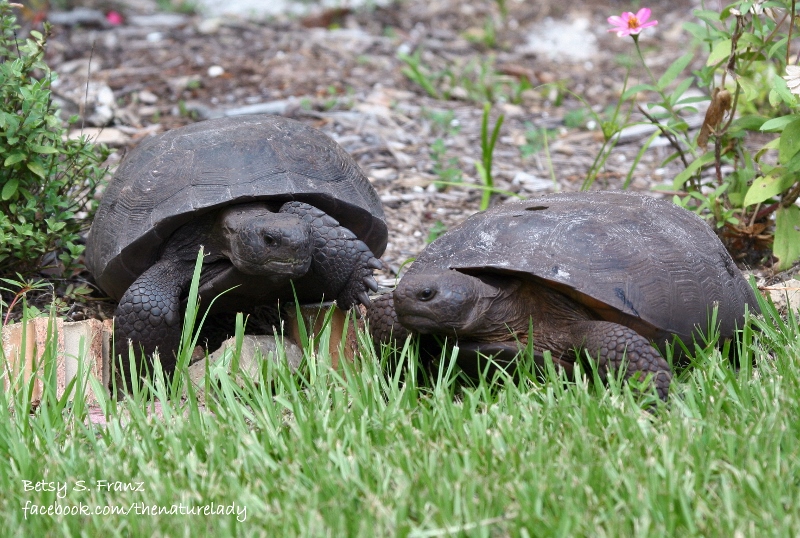 I often step in tortoise poop. At least that’s what I think it is.
I often step in tortoise poop. At least that’s what I think it is.
When we built our home many years ago, we were determined not to disturb the local wildlife that lived on this particular piece of the earth so we squeezed our 3600 square foot home in between the trees and other native plants that were here before us.
Our attempt to move in and coexist with the resident critters has been quite successful. The proof is in the pooping.
It is difficult to walk around our little wooded piece of paradise and not see signs of animal presence. Birds build their nests in every conceivable space. Squirrels and raccoons visit our compost pile, dragging remnants of sweet and sticky fruit out where it is dined on by butterflies and beetles and bees. Moles and voles and armadillos dig holes and tunnels across our non-poisoned, ecologically friendly patches of lawn. And we often step in tortoise poop.
I’m sure I could avoid the tortoise poop if I would remember to look before I step. But it is difficult to keep my eyes on the ground when there is so much going on around me.
Furry and feathered mothers feed their young. Snakes race at lightening speed to capture and devour their hapless prey. Butterflies perform their miraculous transformation from caterpillar to chrysalis to wrinkled winged newborns basking in the sun.
During periods of spring and fall migration it is not unusual to see hundreds of birds darting in and out of the branches of the towering trees or splashing joyfully in the birdbaths that we provide. And on certain days, tiny two inch hummingbirds can be seen in the same gaze as majestic bald eagles flying overhead.
And then there is the poop. To a true nature lover, a pile of poop in the woods is a cause for excitement! A mystery to unfold. Books and flash-card type guides are available that describe “size, content, color and shape” to help identify which creature provided a particular pile of poop (or scat, as it is more commonly called). Educational stores sell displays with actual freeze-dried specimens or life size, realistic replicas mounted and sealed for student study. There are even scatologists – scientists dedicated to the study of poo for the paleontological, medical or biological clues that it holds.
The mysteries that can be revealed in a pile of poo are so valuable that special “scat dogs” are even being trained to help sniff out endangered species feces to help reveal valuable information about the animals, including population size, fertility, gender, stress, and extent of home range.
Of course, we all know that wild bears DO poop in the woods, and wilderness trails often provide powerful piles of poop to explore. Berry-laden loads of herbivores are a lot less exciting than the bone and fur filled feces of carnivorous creatures, but any unfamiliar pile of poop is still cause for a little excitement. What strange creature followed this trail before you? Was it a wolf? A mountain lion? A sleek and stealthy bobcat?
On the trail, most piles are probably passed with little more than an approving glance and perhaps a satisfied nod of the head. Amateur naturalists and wilderness hikers don’t need to know what sort of creature is out there with them. It’s just enough to know that the creatures are there. That’s what the wilderness is all about. Being close to nature and all of it’s mysterious creatures.
So I don’t really mind the fact that I often step in poop. Whether it is the large bone-filled pellets of the regal barred owls (which actually aren’t poo, but items that can’t be digested and are thrown back up) or the grass and leave filled droppings of the ever present tortoises, raccoons and bobcats, I’m pretty proud to say that, because of our sound ecological choices and our willingness to welcome wildlife, poop happens, right in our own backyard.

Leave a Reply